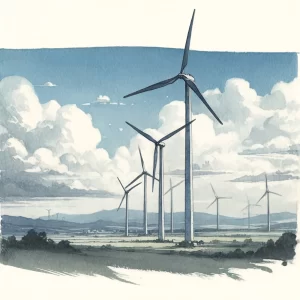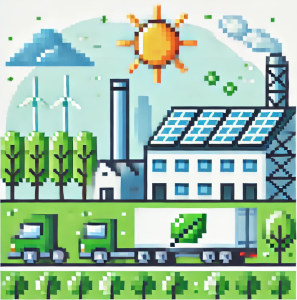
AI’s Green Advantage:
In a world grappling with climate change, every action matters—every choice, every innovation, every opportunity to reduce our carbon footprint. Imagine this: the words you’re reading now, the images you see online, could be created with a fraction of the environmental cost if done by artificial intelligence (AI) instead of humans.
Does that sound right? It didn’t to me. We recently received a letter asking about our carbon footprint. It’s no secret that we use AI images as illustrations, not as diagrams. But should we be going back to old school and scraping Wikicommons?
A recent study reveals that AI systems, like ChatGPT and DALL-E2, emit up to 1,500 times less carbon dioxide (CO₂e) than humans performing the same tasks. This finding has major implications for sustainability, creativity, and the way we work. Let’s break it down.
What’s Behind the Numbers?
To compare the environmental impact of humans and AI, researchers analyzed two common tasks: writing and illustrating. Here’s what they found:
- Writing: A human in the U.S. generates approximately 1.4 kilograms of CO₂e per page, factoring in their daily energy use. In contrast, an AI like ChatGPT emits just 2.2 grams for the same task—a 650x difference.
- Illustrating: Creating one image as a professional illustrator can produce 5,500 grams of CO₂e, while AI tools like DALL-E2 emit just 1.9 grams—a 2,900x reduction.
How is this possible? The secret lies in efficiency. AI systems require significant energy during their initial training phase, but once operational, they process millions of tasks with minimal additional energy use. In contrast, human productivity depends on daily activities like commuting, eating, and maintaining living conditions, all of which contribute to their environmental impact.
A Creative Climate Solution
Picture this: a marketing team drafts a campaign using AI-powered tools. The text is polished, the visuals stunning, and the process swift. Instead of weeks of human effort, it’s done in hours—with a fraction of the emissions.
With writing and illustrating central to industries like publishing, advertising, and education, switching to AI could save thousands of tons of CO₂e every year. It’s like taking thousands of cars off the road without sacrificing creativity or quality.
The Bigger Picture: Challenges and Opportunities
But it’s not all smooth sailing. While AI is a low-carbon alternative, its rise comes with trade-offs:
- Job Displacement: As AI systems handle creative tasks, human jobs may decline in fields like writing and graphic design. This transition mirrors past technological revolutions but raises urgent questions about retraining and economic stability.
- Energy Rebound Effects: If AI tools become ubiquitous, demand for AI-generated content might skyrocket, leading to higher energy use overall. Managing this growth sustainably is crucial.
- Ethical Concerns: AI often relies on training datasets that include copyrighted material, raising legal and moral questions. Striking a balance between innovation and intellectual property rights remains a pressing issue.
Despite these challenges, the study’s authors emphasize that collaboration between humans and AI could harness the strengths of both. Think of AI as the ultimate creative assistant—handling repetitive tasks, sparking ideas, and leaving humans free to focus on strategy and artistry.
Why This Matters Now
The urgency of the climate crisis demands bold action. As industries rethink their operations, AI offers a practical way to cut emissions without compromising productivity. Its environmental advantage could support global goals like the United Nations Sustainable Development Goals, particularly:
- Goal 12: Ensure sustainable consumption and production.
- Goal 13: Take urgent action to combat climate change.
Every page written by AI, every image illustrated by algorithms, represents a step toward a greener, more sustainable future.
Join the Conversation
Now, it’s your turn to weigh in. What do you think about the role of AI in reducing carbon emissions?
- Would you prioritize sustainability over creativity if it meant switching to AI tools?
- How can industries ensure that AI adoption benefits both the planet and people?
Let’s spark a dialogue about how AI can shape a better tomorrow—together.
Unlock Science Secrets:
Discover revolutionary research and innovative discoveries with ‘This Week in Science’! Designed for educators and science lovers, our free weekly newsletter offers insights that can transform your approach to science. Sign up now and deepen your understanding and passion for science. If you liked this blog, please share it! Your referrals help This Week in Science reach new readers.



